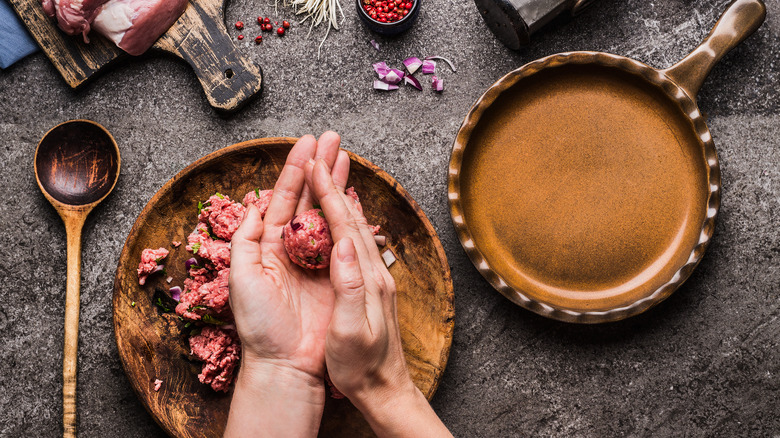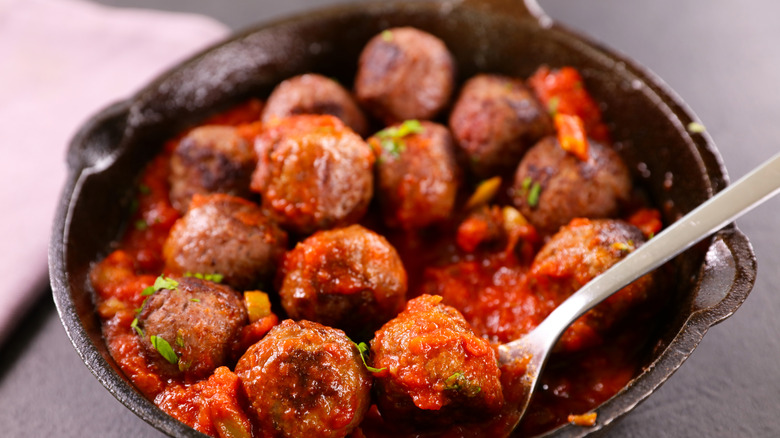Stop Overmixing Your Meatballs
Meatballs seem like a pretty easy meal to make. Mix ground meat with an egg and bread, throw in some herbs, and Voila! Dinner is served. But, perhaps you've experienced the disappointment of making meatballs and ending up with something more like a hardball than a soft meat pillow. So what happened? There's a lot of information on how not to screw up your meatballs, but perhaps the most often mentioned no-no is: Do not, under any circumstances, overwork the meat unless you want a hockey puck sandwich. But, what does that mean? Maybe you have no idea what overworked ground meat looks or feels like until you're gnawing a failed ball. Here are some suggestions on how to know when your meatball mix is ready to cook.
First, using a food processor to make meatballs is not advised unless it is to grind the meat, per Cuisinart. Bon Appétit mandates using your hands so you can feel the point when the ingredients are incorporated and not continue to work the mixture into a dense paste, which will equal heavy meatballs. Although Chef Works concedes that if you aren't one to play with your food, especially raw meat, you can also use a wooden spoon to mix your batch. There is a caveat to using your hands, though. The Spruce Eats relays that the heat of your hands can melt the fat in your meat, causing ground beef to dry out, which in turn would lead to dry meatballs.
More Reasons Your Meatballs are Hard
Sticky hands can result in an overworked farcemeat. Too much time spent forming the balls can also make them tough, and you're more likely to overwork them if you can't get them off your hands. To avoid this sticky situation, keep a dish of cold water next to you as you work, and dip your fingers in as you make the balls. Alternately, the culinary blog Wonder How To suggests rubbing your hands with a bit of olive oil before working with raw ground meat. It also protects your skin from the burn of chili if you happen to be making a spicy meatball. Or you can bypass the issue (per The Bittman Project) and form them with two spoons.
You can also try the mixing technique of Cafe Lago's Chef Jordi Viladas, referred to as "the claw." Imagine you have a paw like a sloth. Spread your fingers and quickly tuck your claw into the meat and lift, tuck and lift until the mix consolidates. This method will produce a light, tender meatball that won't fall apart, according to Bon Appétit.
Some final advice for making a soft meatball: during cooking, Fine Cooking tells us to "resist fiddling." You have gently mixed and carefully patted your meatballs into shape, don't push them around in the pan or smash them with a spatula. It could undo all of your gentle labors.

